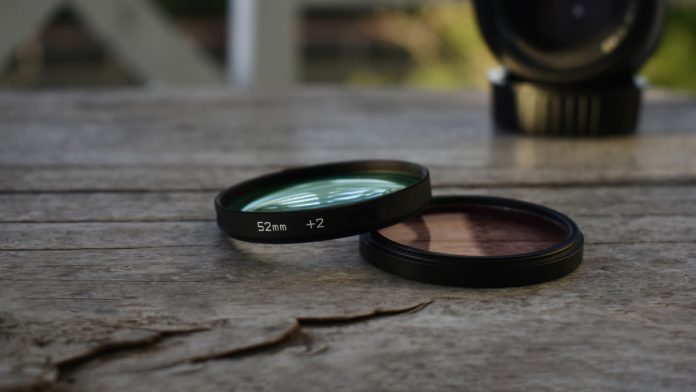The evolution of smart cinematic equipment has been dramatically influenced by the development of Sensor-Integrated Lens Filters. These filters merge optical elements with sophisticated electronics, enabling dynamic imaging and adaptive performance. This article explores the Electronics and Technology Behind Sensor-Integrated Lens Filter, detailing how refined interfaces, signal processing, and embedded intelligence advance image quality and operational reliability in real-world cinematic applications. By integrating high-end sensor data with cutting-edge processing, the industry unlocks unprecedented creative and technical potential.
| Table of Contents | |
|---|---|
| I. | High-Performance Sensor Interface Design |
| II. | Advanced Signal Conditioning and Analog Front-End (AFE) Circuits |
| III. | Precision Sensor Calibration and Auto-Correction Algorithms |
| IV. | Integration of High-Resolution Analog-to-Digital Converters (ADCs) |
| V. | FPGA/ASIC-Based Real-Time Digital Image Processing |
| VI. | Low-Noise and High Dynamic Range Electronics Design |
| VII. | MEMS-Based Tunable Filter Integration |
| VIII. | High-Speed Data Interface and Synchronization Electronics |
| IX. | Robust Power Management and Thermal Control Solutions |
| X. | Adaptive Optics Integration with Sensor Electronics |
| XI. | Embedded Machine Learning for Dynamic Optimization |
High-Performance Sensor Interface Design
Designing a high-performance sensor interface is critical for ensuring accurate and rapid communication between the lens filter’s sensor elements and the processing unit. In smart cinematic equipment, this interface minimizes latency and preserves signal integrity, thereby providing sharp, real-time imaging. It incorporates adaptive circuitry that handles varying signal levels and noise conditions, establishing a robust foundation for overall system performance and flexibility.
Advanced Signal Conditioning and Analog Front-End (AFE) Circuits
Advanced signal conditioning via AFE circuits prepares sensor outputs for precise digitization in a Sensor-Integrated Lens Filter. These circuits efficiently manage amplification, filtering, and noise reduction, ensuring high fidelity in capturing visual data. This robust design is a testament to the progress in sensor integration, and it underscores the potential of innovation, exemplifying the cutting-edge integration of Electronics Behind Sensor-Integrated Lens Filter in smart cinematic equipments.
Precision Sensor Calibration and Auto-Correction Algorithms
Precision calibration and auto-correction algorithms are integral to maintaining uniform performance across various light conditions and sensor inconsistencies. By dynamically adjusting for temperature drift, optical aberrations, and sensor non-uniformities, these algorithms ensure that the Sensor-Integrated Lens Filter consistently delivers optimal imagery. Such self-corrective capabilities are essential for high-quality cinematic results, allowing for seamless adjustments during real-world shooting conditions.
Integration of High-Resolution Analog-to-Digital Converters (ADCs)
High-resolution ADCs convert analog signals from sensor arrays into digital format without sacrificing detail or dynamic range. In the Sensor-Integrated Lens Filter design, these converters are optimized for speed and precision, providing the digital data required for complex image processing. This critical link bridges the optical and digital worlds, ensuring that every nuance captured by the sensor is represented accurately in the final image.
FPGA/ASIC-Based Real-Time Digital Image Processing
By leveraging FPGA and ASIC technologies, real-time digital image processing achieves rapid data handling and intricate computations directly at the source. This hardware acceleration enables tasks such as noise reduction, contrast enhancement, and dynamic range adjustments to occur on the fly. This design approach is a cornerstone of Technology Behind Sensor-Integrated Lens Filter in smart cinematic equipment, empowering filmmakers with instant, refined imaging solutions.
Low-Noise and High Dynamic Range Electronics Design
Developing low-noise and high dynamic range electronic systems is essential for handling the demanding light conditions encountered in cinematography. The design minimizes electronic interference while maximizing the range of captured intensities. This precise balance is crucial for producing images with rich detail and contrast. The exceptional performance reflects advanced Electronics Behind Sensor-Integrated Lens Filter capabilities, ensuring pristine visual output even in challenging environments.
MEMS-Based Tunable Filter Integration
Integrating MEMS-based tunable filters with sensor systems introduces a dynamic element where wavelengths can be selectively controlled. Such flexibility allows the lens filter to adjust spectral responses in real time, optimizing image quality and color accuracy. This miniaturized mechanical solution is pivotal in ensuring that sensor data is tailored to specific shooting environments, thus enhancing the overall cinematic experience.
High-Speed Data Interface and Synchronization Electronics
High-speed data interfaces and precise synchronization electronics guarantee that vast amounts of sensor data are relayed in real time to processing units without interruption. In the Sensor-Integrated Lens Filter, these interfaces enable seamless coordination between multiple components, ensuring that every frame is processed accurately and timely. The robust data path supports the high-throughput demands of cinematic applications and maintains overall system performance.
Robust Power Management and Thermal Control Solutions
Robust power management ensures that Sensor-Integrated Lens Filters operate reliably, even under heavy processing loads. Integrated with smart thermal control solutions, these systems efficiently dissipate heat and maintain stable operating conditions. This careful balance prevents performance degradation and extends the operational life of sensors and electronics, ensuring sustained high performance during long shooting sessions.
Adaptive Optics Integration with Sensor Electronics
Adaptive optics integration provides real-time corrections for wavefront distortions and alignment errors within the optical path. By synchronizing sensor electronics with dynamic optical elements, the system continuously optimizes light collection and focus. This synergy enhances clarity and resolution, ensuring that each image captured reflects the highest quality possible under varying conditions. The integration reinforces the advanced capabilities central to smart cinematic equipment.
Embedded Machine Learning for Dynamic Optimization
Embedded machine learning algorithms analyze sensor data on the fly to intelligently adjust operational parameters such as exposure, contrast, and focus. This dynamic optimization ensures that the Sensor-Integrated Lens Filter adapts to changing environments and shooting conditions, delivering consistently optimized outputs. The integration of AI transforms traditional imaging systems, revolutionizing the field and underscoring the Technology Behind Sensor-Integrated Lens Filter, thereby elevating smart cinematic equipment to new performance heights.

